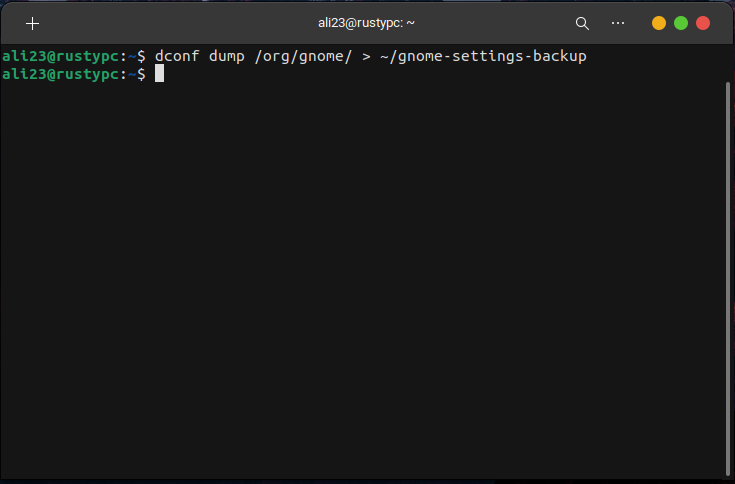Quick Links
Need to go to factory settings on your Ubuntu system but don’t want to lose important data? The dconf tool is what you’re looking for. It will reset Ubuntu back to what it was when you first installed it without intervening with other files.
dconf is a low-level configuration management tool that stores system and user settings for GNOME and other desktop applications. By exporting your dconf database, you can preserve all current configurations and restore them later if needed. For demonstration purposes, I’m using Ubuntu 22.04 with GNOME in this guide.
Creating a Backup
You need to create a backup of your current settings first before trying to restore the previous state in case something goes wrong. There are many ways to create a backup on Linux. For this guide, I’m going to stick to dconf for desktop configuration settings. First, open your terminal and run the command below:
dconf dump / > ~/dconf-backup
This creates a backup named “dconf-backup” in your home directory, which contains all your system settings. If you want to create a backup of only specific settings, that’s also possible. For example, you may only want to save the desktop environment settings. In that case, pass the directory that contains those settings to the dconf command, like this:
dconf dump /org/gnome/ > ~/gnome-settings-backup
After taking the backup, you can verify it by inspecting the contents of the backup file to ensure the data was successfully saved. For that, run:
cat ~/dconf-backup
Once you’ve done that, make sure to save a copy of the backup file to an external drive or cloud storage to ensure it’s safe in case anything goes wrong during the reset process.
Resetting Ubuntu to Default Settings
With the backup ready, let’s now reset the Ubuntu settings. To simply reset all application and desktop environment settings, run this command in your terminal:
dconf reset -f /
This command cleans all user-specific settings in the dconf database. It resets configurations for GNOME and other apps that use dconf for storing settings. After this, your desktop should return to the default state. The more customizations you have, the easier you’ll notice the changes.
Similar to the backup, if you don’t want to reset everything, you can target specific parts of your configuration, such as desktop settings, app preferences, or keyboard shortcuts. So, for example, if I wanted to reset only GNOME desktop appearance settings (such as themes, icons, and wallpaper,) I’d run:
dconf reset -f /org/gnome/desktop/
This command will revert all desktop-related configurations to their defaults.
Restoring Old Settings From the Backup
Once you’ve reset Ubuntu to its default settings, you may want to restore the previously backed-up settings if necessary. You can do that using the dconf tool. First, locate the backup file. If you followed the earlier instructions, it should be named “dconf-backup” and located in your home directory or wherever you decided to save it. If it’s in the home directory, then run:
dconf load /Replace "~/dconf-backup" with the path to your actual backup file if it's located somewhere else. This command will import all the settings stored in the backup file, restoring your desktop environment and system preferences to their previous state.
If you only want to restore certain parts of your settings, such as GNOME appearance or keyboard shortcuts, you can do that too. Make sure to replace the "https://www.howtogeek.com/" path with the path in which those settings are located. So, if you want to restore only GNOME-related settings from a specific backup file, run:
dconf load /org/gnome/Once the restoration is complete, you can verify if your settings have been successfully applied. Check things like your desktop layout, app preferences, and other configurations to make sure they are back to their previous state.
With the dconf tool, you can reset Ubuntu to its original settings. However, the dconf database may not store every single change you've made to your system. In this case, you'll also need to manually reverse them through other configuration-changing processes.







